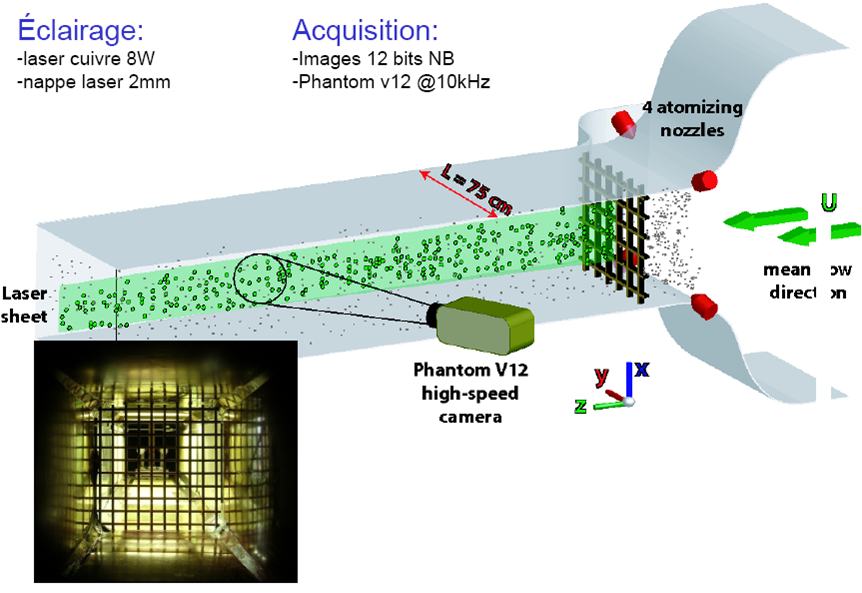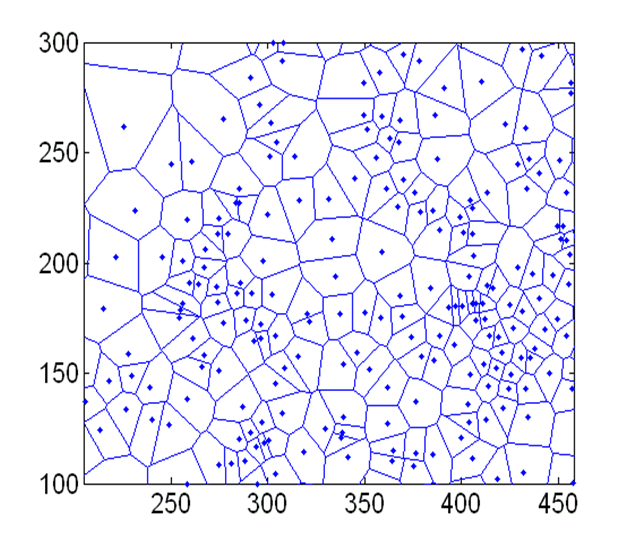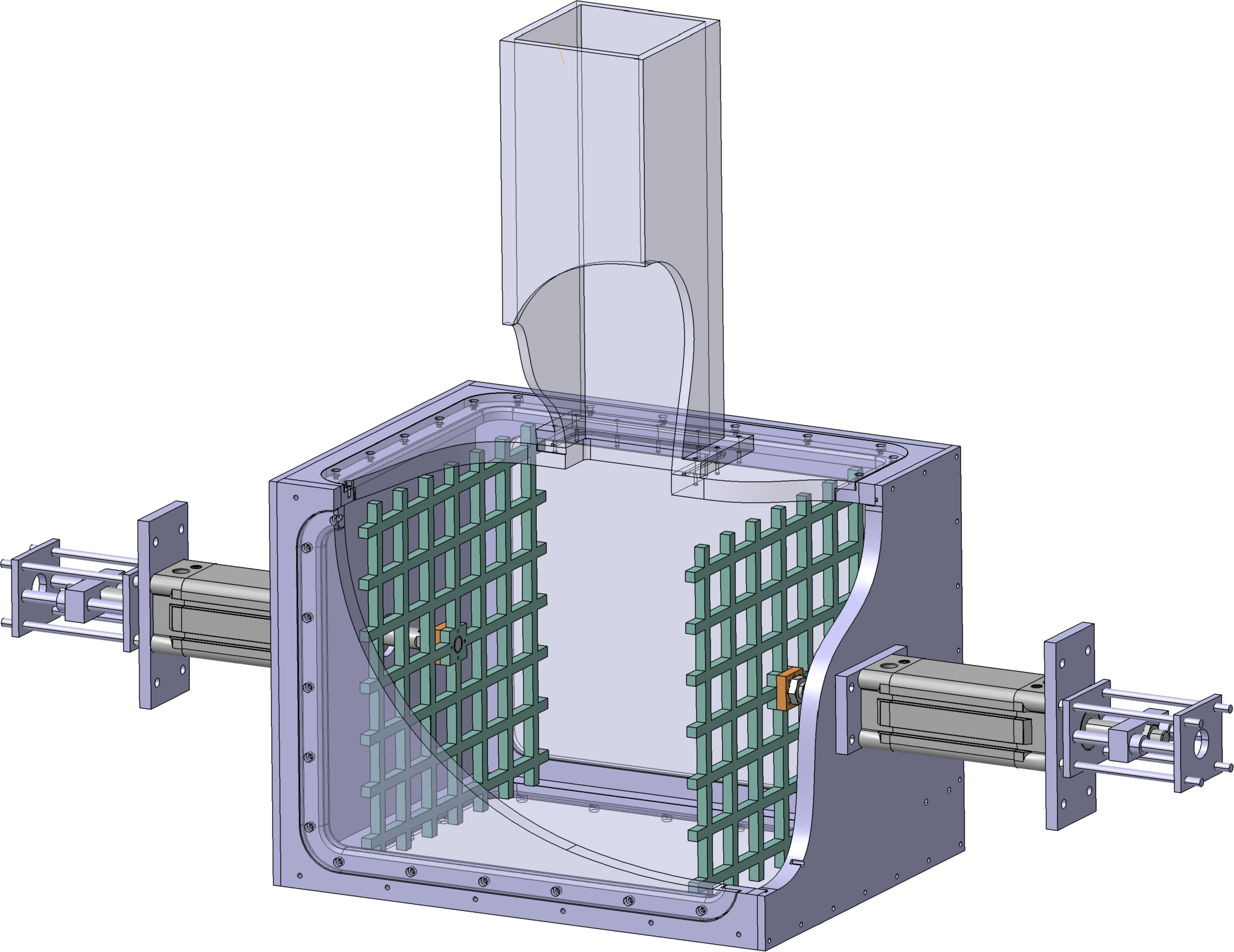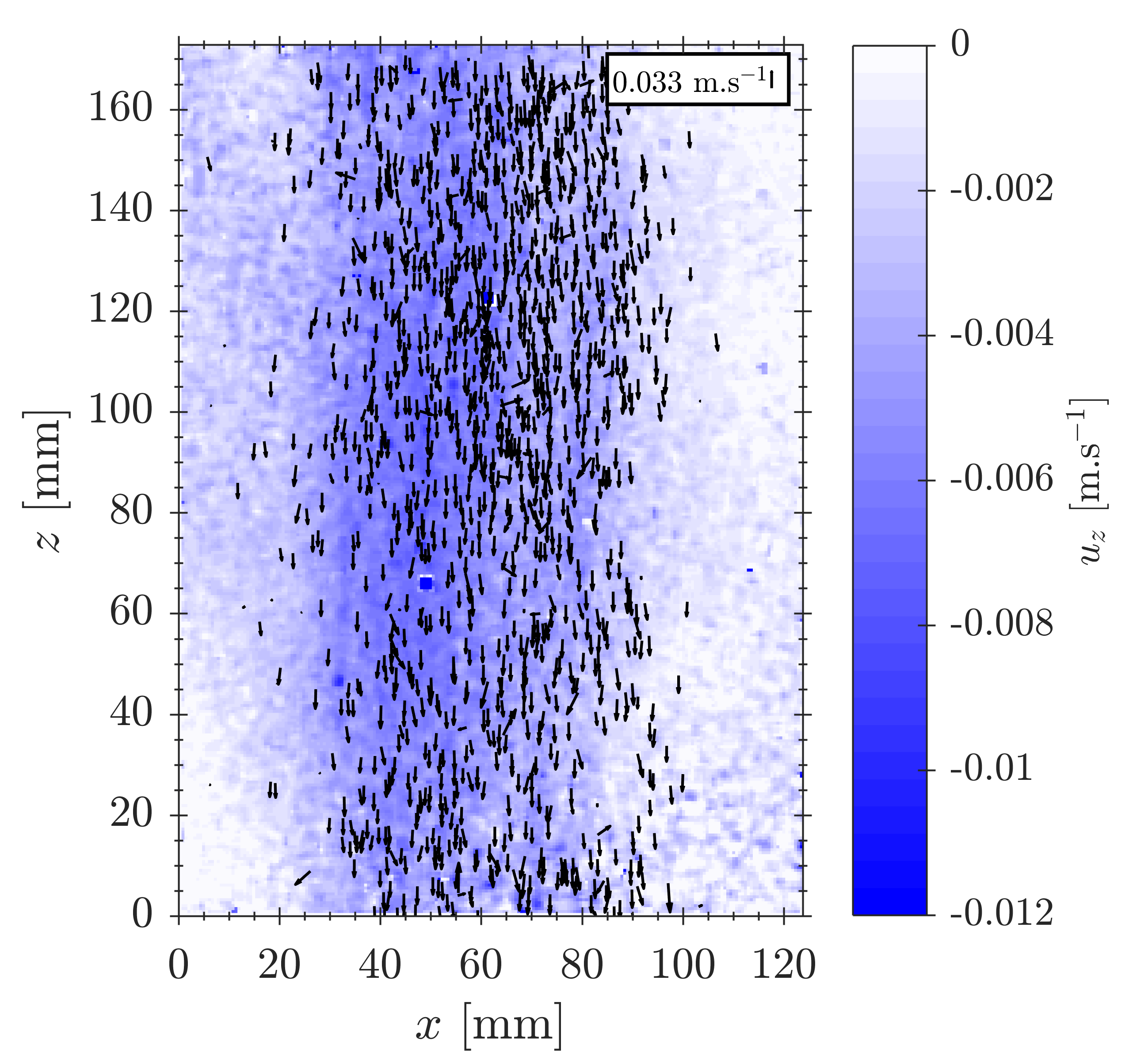Inertial particles in turbulence
In a collaboration with LEGI (Laboratoire des Ecoulements Géophysiques et Industriels, Grenoble, France), I have started studying particle laden turbulent flows during my post-doc in Grenoble in 2008. I aim at characterising heavy particles dynamics in homogeneous isotropic turbulent flows. Since 2011, in collaboration with Anne Dejoan from CIEMAT (Madrid, Spain), we are addressing the settling velocity enhancement of particles in turbulent fields from a numerical point of view. More recently, in collaboration with David De Souza and Till Zurner, I have designed at ENSTA a new experiemnt, in water. With Marc Massot from Ecole Polytechnique and Aymeric Vié from CentraleSupelec, we are more interested on the back-reaction of the particle on the carrier fluid.

Particle laden flows are linked to many industrial and environmental issues and the comprehension of the basic mechanisms underlying their dynamics is of prime interest regarding design and optimisation of industrial processes (oil transport, combustion, chemical reaction...) as well as the understanding of natural phenomenons (plankton dispersion in ocean, rain formation, pollution of atmosphere...). For the last forty years, many fundamental studies have allowed observation and characterisation of many properties of these flows. When particles size is much smaller than smaller turbulent scales and when their density matches the fluid's one, they behave as tracers and follow the fluid dynamics. Nevertheless, when they have an inertial behaviour due to their size or density, they do not follow the fluid any more and dynamic is more complex: terminal velocity of these particles is enhanced in the gravity field, the concentration field presents strong inhomogeneities and cluster formation is observed.
Related positions:
Related publications
Physical Review Fluid, in prep Physical Review Fluid, 8(2), 024301. (2023) Experiments in Fluids, 62(5), 1-14. (2022) Phys. Rev. Fluids, 2(10), 104302. (2017) Physica Scripta, T155, 014056. (2013) Phys. of Fluids, 25, 013301 (2013)Int. J. Mult. Flow, 40, 1-18 (2012)
Phys. of Fluids, 22, 103304 (2010)
Collaborators
Anne Dejoan
Martin Obligado
Till Zurner
Clément Toupoint
David De Souza
Aymeric Vié
Marc Massot
Mickael Bourgoin
Alain Cartellier
 Experimental wind tunnel at LEGI, Grenoble, France.
Experimental wind tunnel at LEGI, Grenoble, France.
 Example of a Voronoï tessellation in experimental data from LEGI.
Example of a Voronoï tessellation in experimental data from LEGI.
 Our new experiment at ENSTA. Two oscillating facing grids generate moderate Reynolds number turbulence in water. Flow is seeded with particles of various densities and diameters.
Our new experiment at ENSTA. Two oscillating facing grids generate moderate Reynolds number turbulence in water. Flow is seeded with particles of various densities and diameters.
 Example of a simultaneous particle and fluid measurement in ENSTA experiment.
Example of a simultaneous particle and fluid measurement in ENSTA experiment.